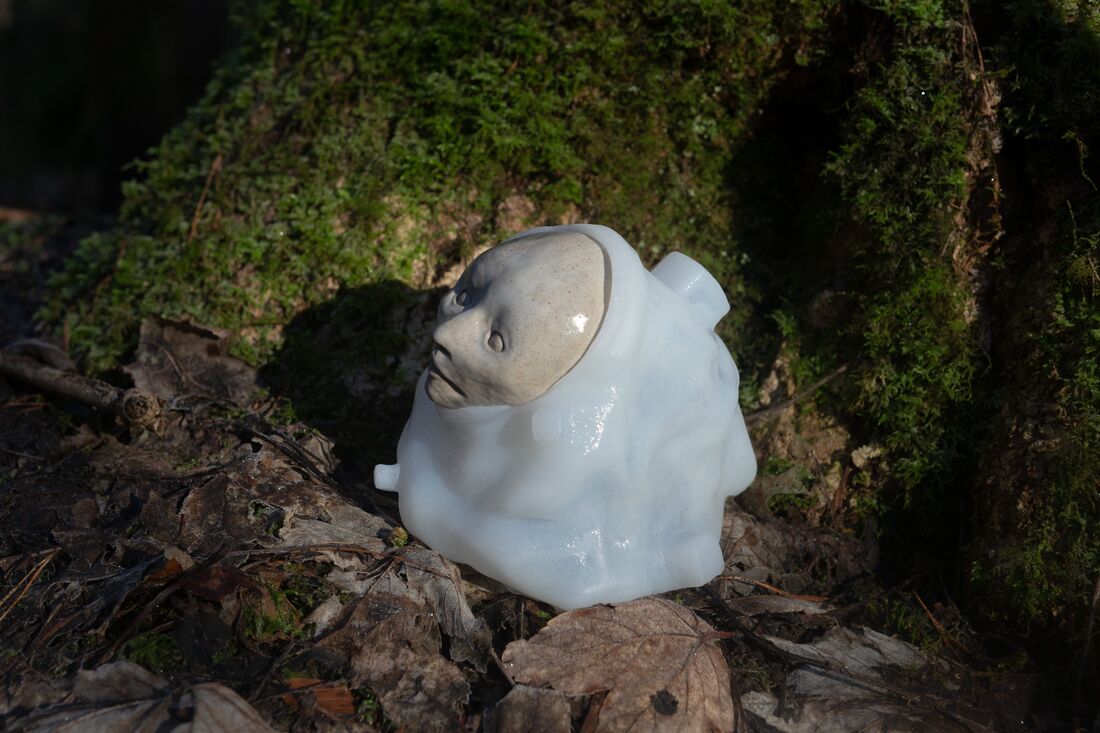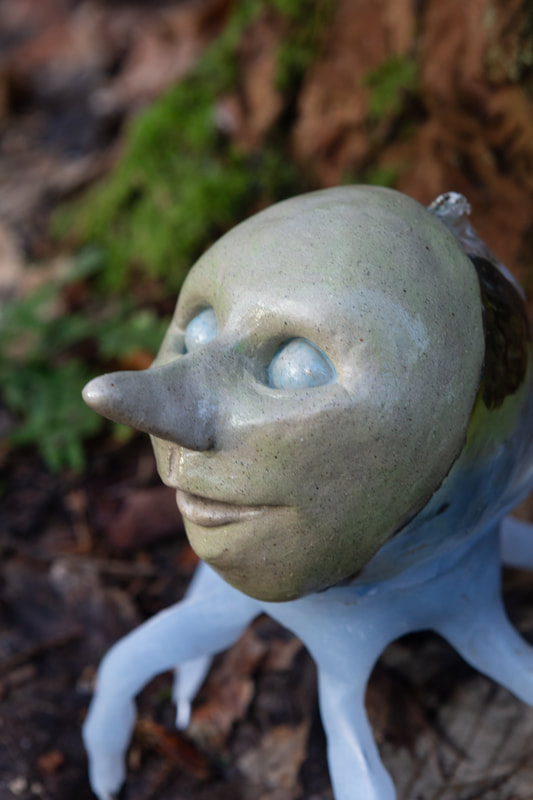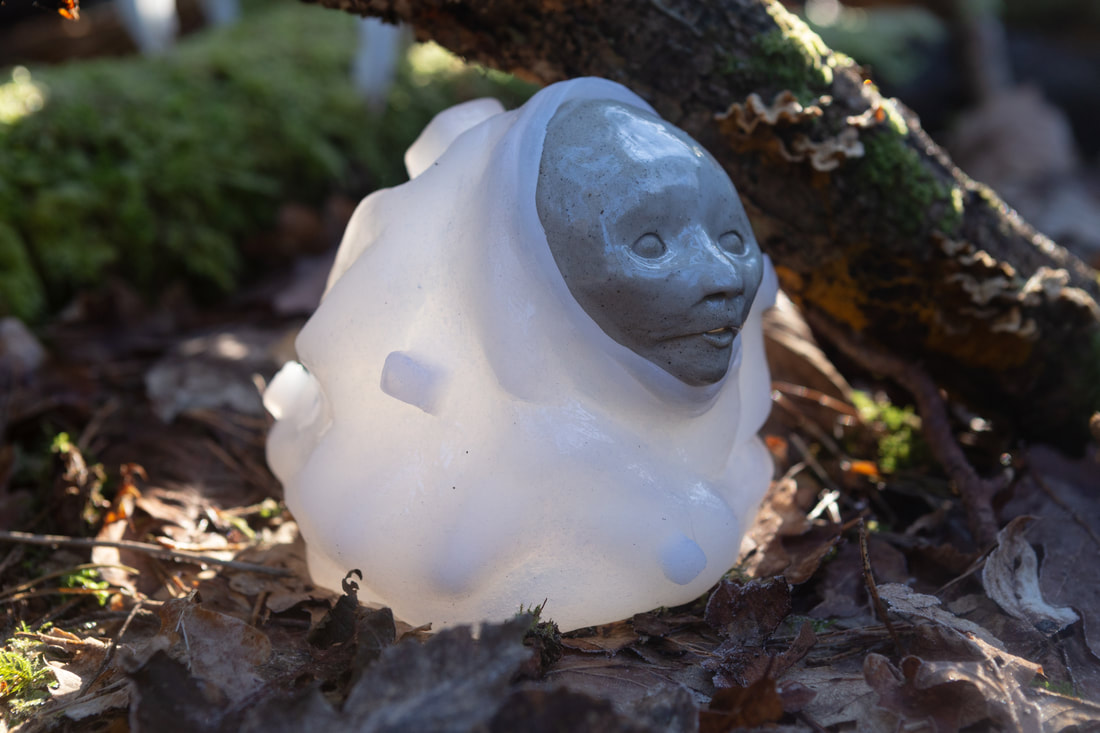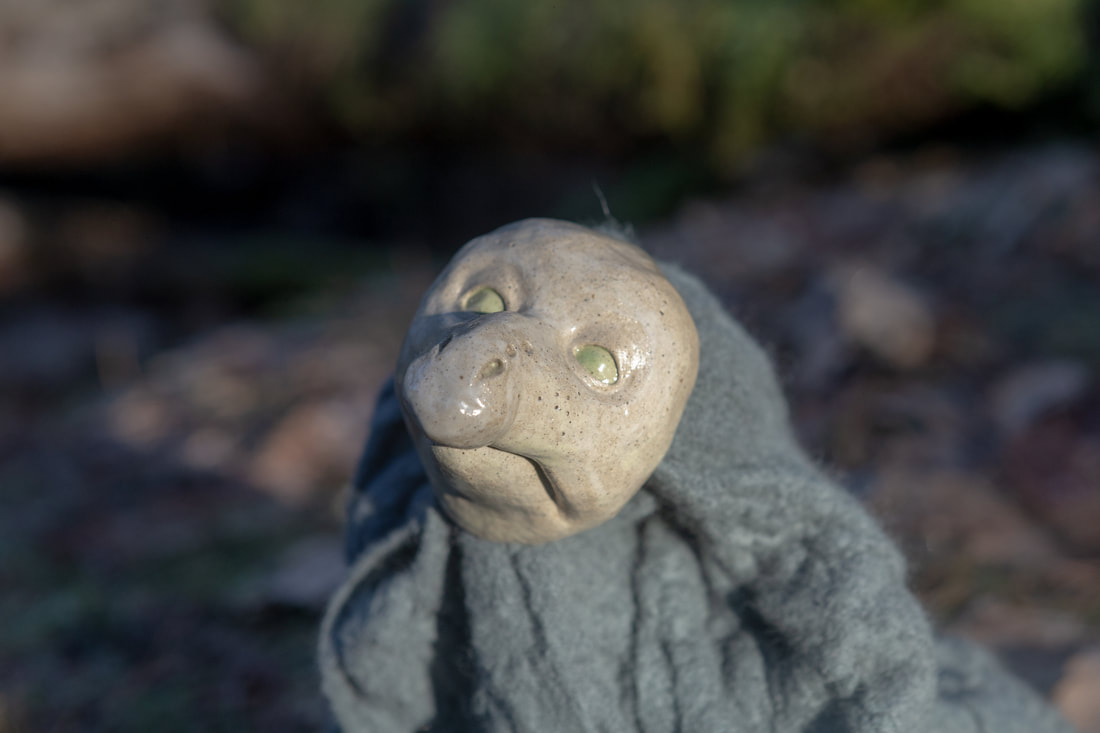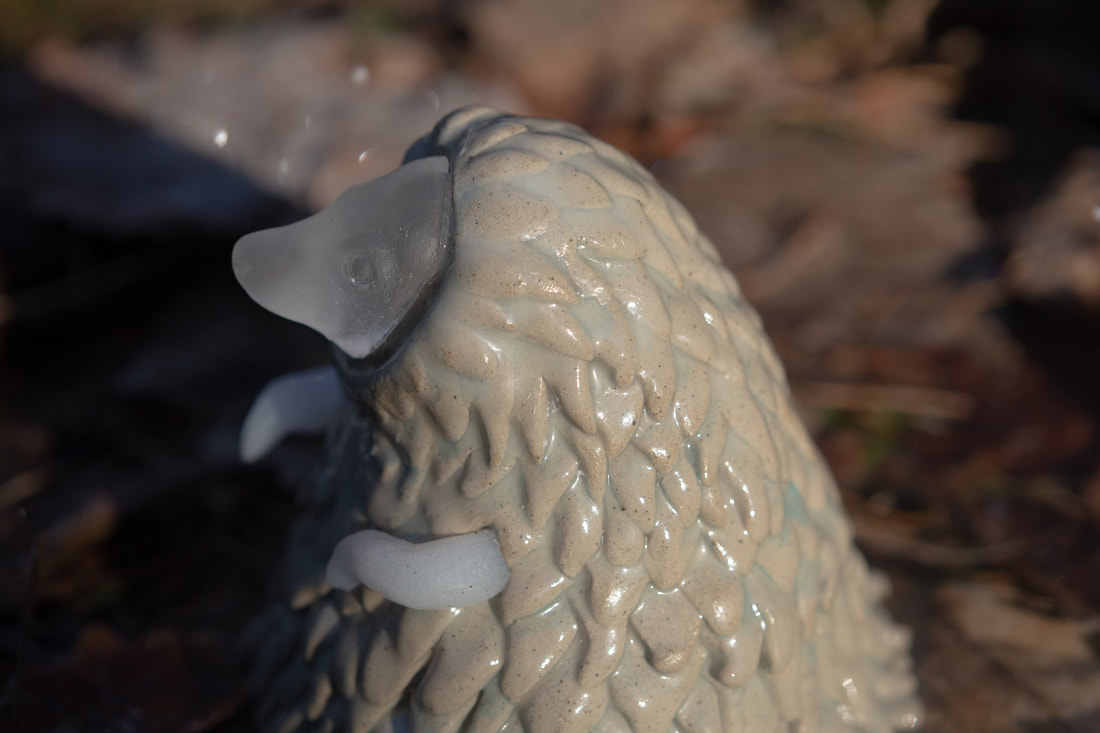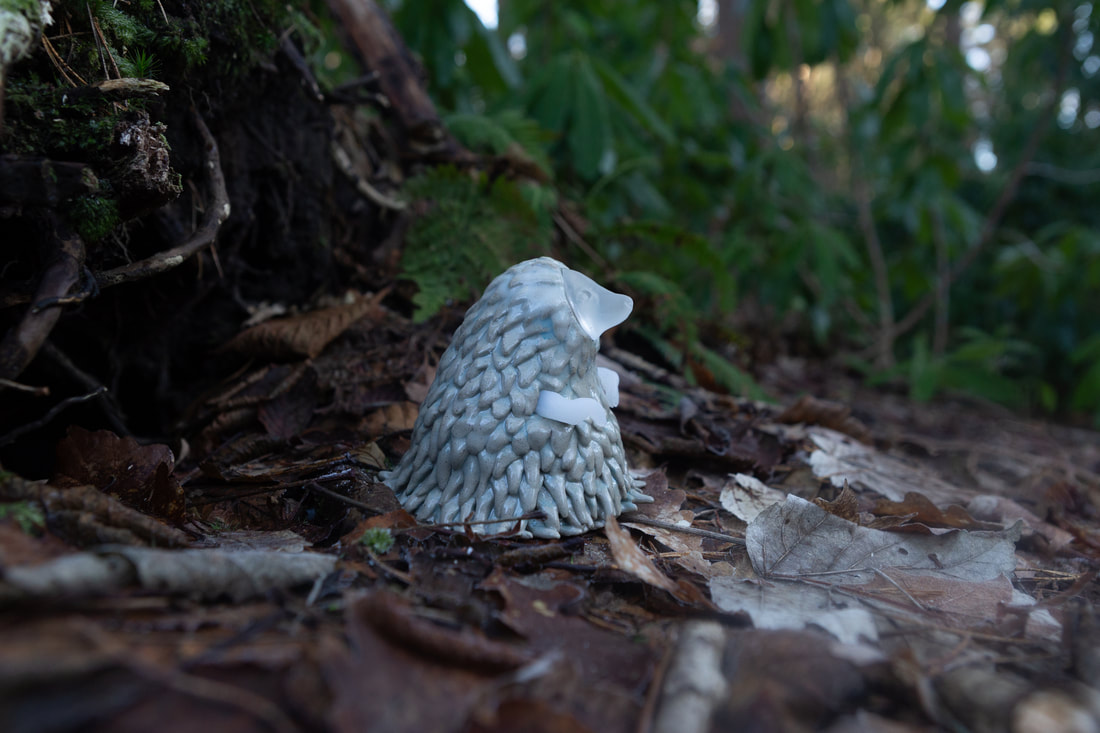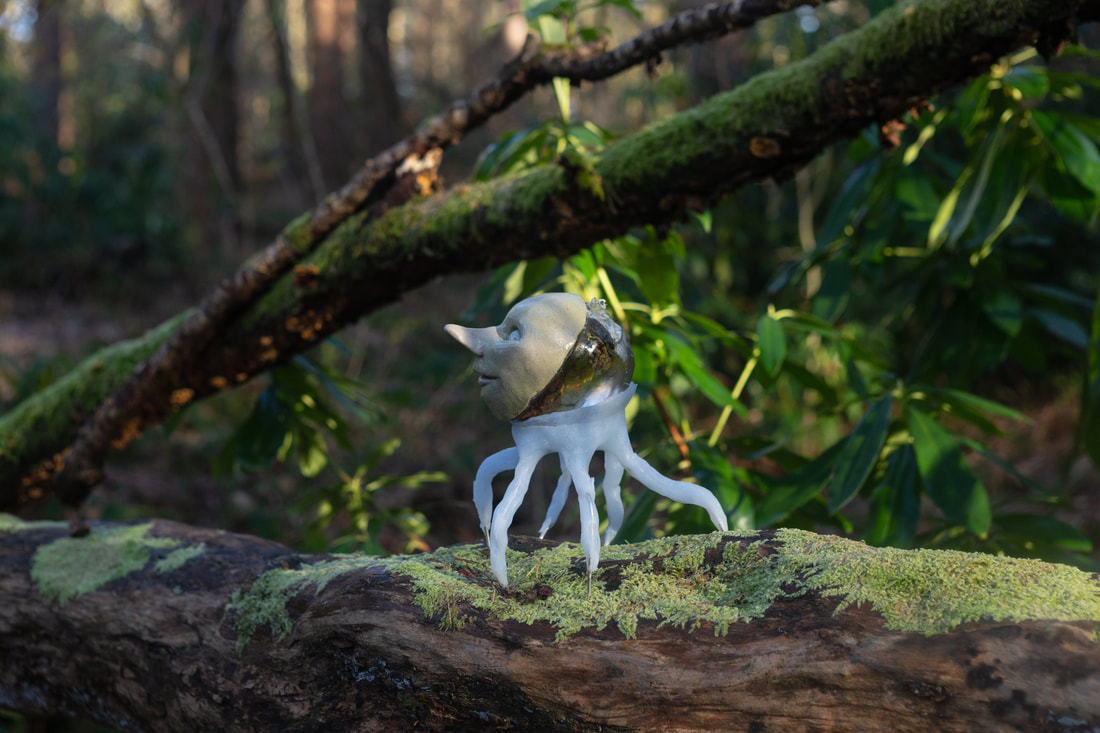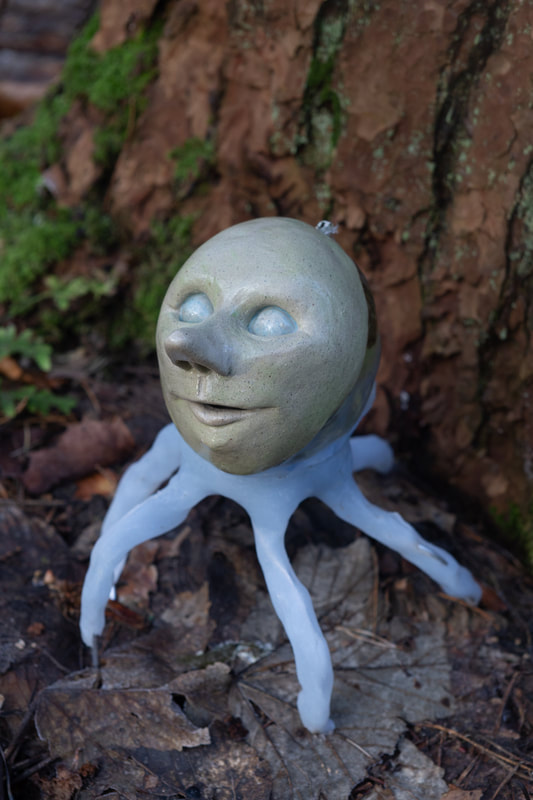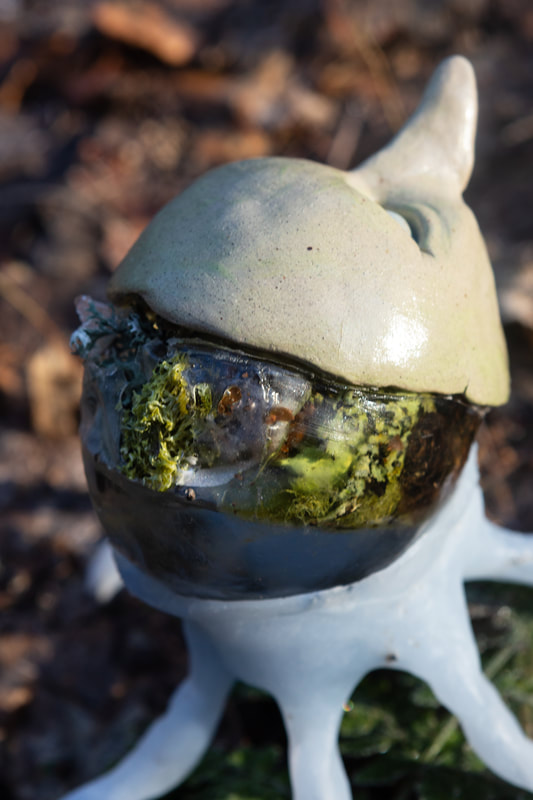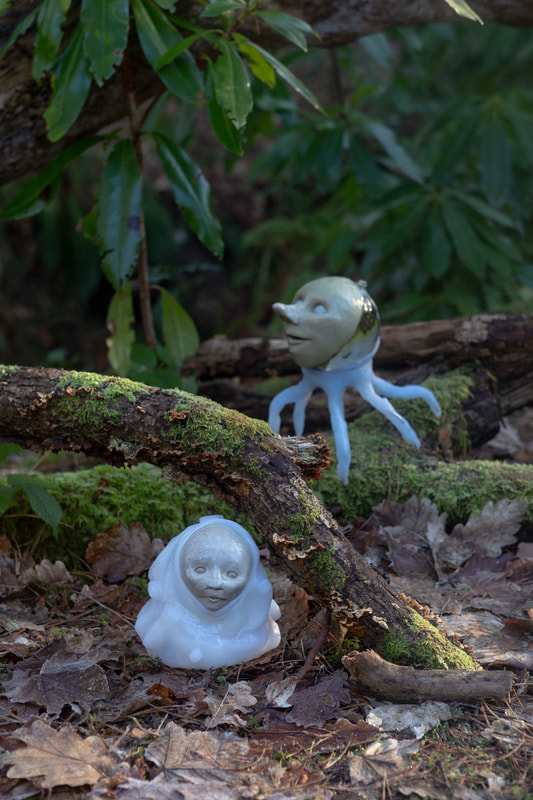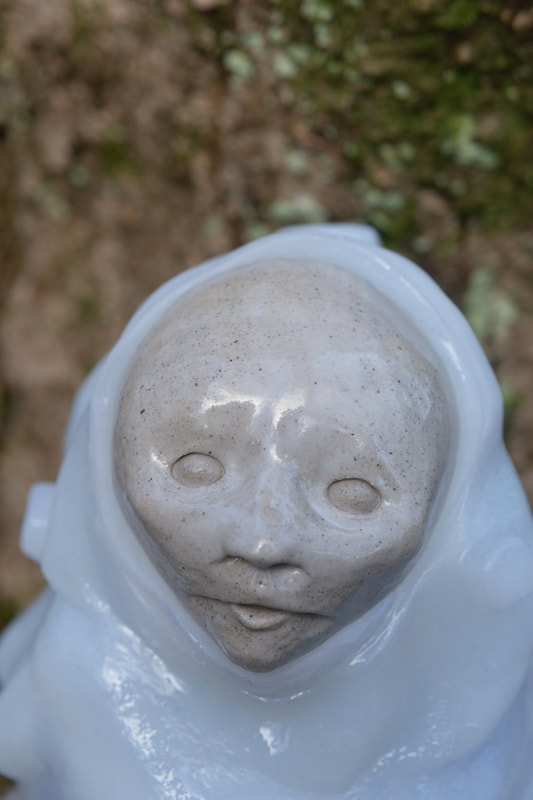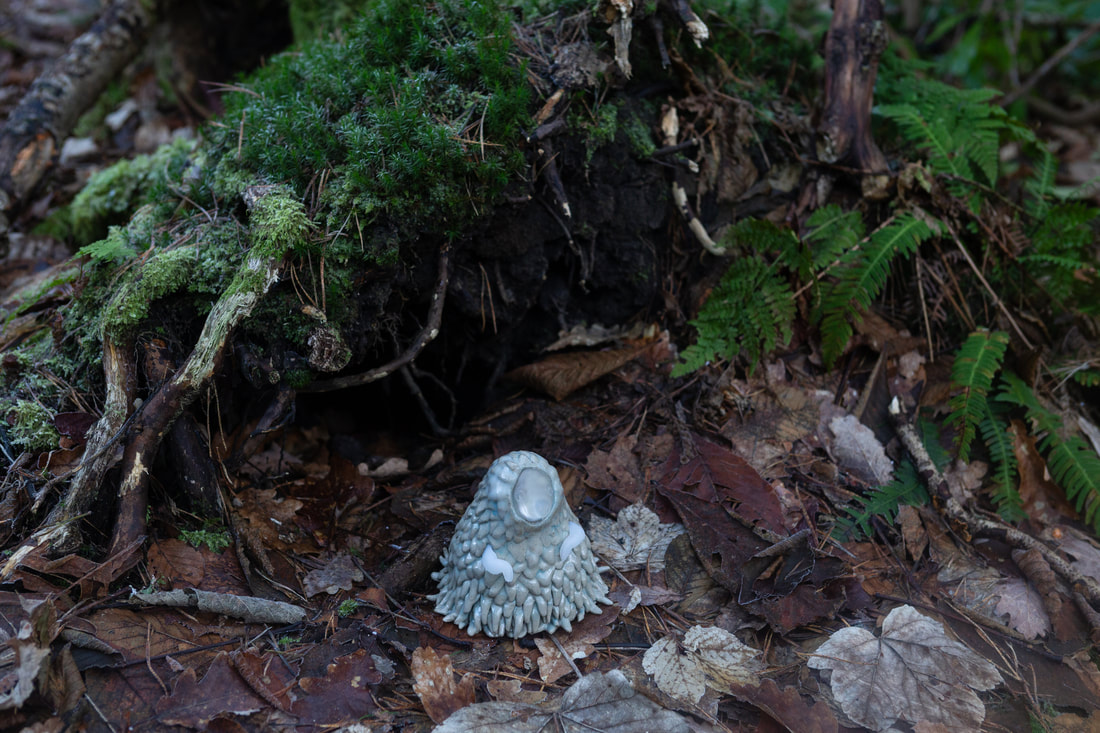Aniara Omann
A Different Kind of Love
NEVVEN ON SITE — Web Presentation
Feb 4 — Mar 21, 2021
“It’s funny about love’, Sophia said.
‘The more you love someone, the less he likes you back.’
‘That’s very true,’ Grandmother observed.
‘And so what do you do?’
‘You go on loving,’ said Sophia threateningly.
‘You love harder and harder.”
(Tove Jansson, The Summer Book)
NEVVEN is proud to present A Different Kind of Love a solo show by Danish artist Aniara Omann presenting digitally a new body of sculptural works installed in the luxuriant off—site setting of a forest outside Glasgow, UK. Inspired by the oneiric settings of Early 1900s Nordic children illustrations, such as the work of Elsa Beskow, Omann installs her newest sculptures, mixed media accrochages of ceramics, eco-resin, moss, felted wool and silicone, in the setting of a forest and in the shadows, hidden niches and meadows where only a curious child would look for them.
These ceramic creatures, mysterious and benevolent looking, are staged in what the artist imagines as a mixture between a far in the future world and a parallel reality to our own time. The main difference between our society and this powerfully evocative one is relational, and it deals with the idea of love. In this context love is not although taken as the shared common meaning of this term in nowadays world, Omann wants instead “to suggest a kind of future way of living and loving, that goes beyond the ways we have been taught through our collective conditioning” and places this utopia in a green and lush future that somehow reminds of the travels, reflections and atmospheres of Wells’s novella The Time Machine. It is peculiarly on point, then, the strong connection between these works and science fiction and the political undertones of both this exhibition and the best results of this literary genre. Science fiction has always harboured such mighty creative potential: allowing us to contemplate possible realities and relations. To imagine the future of mankind mirrored by the sociopolitical and inter-relational analysis of the present, and looking “beyond our current societal structures and formats” is precisely what Omann asks us to do by looking at this exhibition.
Photo: Sean Campbell
A Different Kind of Love
NEVVEN ON SITE — Web Presentation
Feb 4 — Mar 21, 2021
“It’s funny about love’, Sophia said.
‘The more you love someone, the less he likes you back.’
‘That’s very true,’ Grandmother observed.
‘And so what do you do?’
‘You go on loving,’ said Sophia threateningly.
‘You love harder and harder.”
(Tove Jansson, The Summer Book)
NEVVEN is proud to present A Different Kind of Love a solo show by Danish artist Aniara Omann presenting digitally a new body of sculptural works installed in the luxuriant off—site setting of a forest outside Glasgow, UK. Inspired by the oneiric settings of Early 1900s Nordic children illustrations, such as the work of Elsa Beskow, Omann installs her newest sculptures, mixed media accrochages of ceramics, eco-resin, moss, felted wool and silicone, in the setting of a forest and in the shadows, hidden niches and meadows where only a curious child would look for them.
These ceramic creatures, mysterious and benevolent looking, are staged in what the artist imagines as a mixture between a far in the future world and a parallel reality to our own time. The main difference between our society and this powerfully evocative one is relational, and it deals with the idea of love. In this context love is not although taken as the shared common meaning of this term in nowadays world, Omann wants instead “to suggest a kind of future way of living and loving, that goes beyond the ways we have been taught through our collective conditioning” and places this utopia in a green and lush future that somehow reminds of the travels, reflections and atmospheres of Wells’s novella The Time Machine. It is peculiarly on point, then, the strong connection between these works and science fiction and the political undertones of both this exhibition and the best results of this literary genre. Science fiction has always harboured such mighty creative potential: allowing us to contemplate possible realities and relations. To imagine the future of mankind mirrored by the sociopolitical and inter-relational analysis of the present, and looking “beyond our current societal structures and formats” is precisely what Omann asks us to do by looking at this exhibition.
Photo: Sean Campbell
